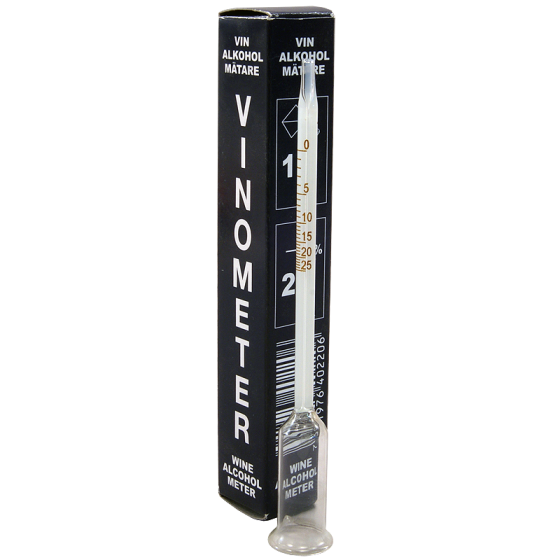Glass Vinometer - Wine Alcohol Meter
Glass Vinometer - Wine Alcohol Meter
£5.49
Ex Tax: £5.49
- Stock: 14 In Stock
- 13cm Glass Alcohol Meter.
- Shows Approximate Alcohol Content By Volume In Wines - Not For Use With Spirits Or Liqueurs.


- Fill wine into the funnel until it drips out through the pipe.
- Turn meter upside down, take a reading when the movement has stopped.
- This is a very simple way to check the alcohol content of your home brew wine but remember - it is very approximate and you need to know how it works to avoid the common pitfalls.
- It works on (still) wine only, not beer or spirits. - It will only work if there is no CO2 left in your wine. - It will only work if your wine is 8-13% or around these values.
- The homebrew wine alcohol meter uses the capillary effect in the liquid to determine the alcohol. This will only work on "normal" strength home brewed wines. Unfortunately most meters are graduated between 0-25% but the error outside 8-13% is too large, it simply doesn't work there.
- Trick: If you have a very strong wine, dilute it with equal amount of water, then take a reading. If reading ends up inside the interval 8-13% you know you can trust it and in reality it is twice as high.
- The best way of using it is actually to dilute your wine and take readings until you get approximately 10%. Then determine the strength from your dilution factor.
- It is very important that you have no CO2 left. The carbon dioxide changes the surface tension of the liquid and you will get a completely wrong value. A simple method if you have a still unstable wine is to take a small sample, shake out all CO2, pour it on a saucer and leave it in the fridge overnight. This will usually stabilise it and get rid of most CO2. Another method is to boil sample in the microwave for one minute, then add back water to make up for the loss during boiling. This is a bit difficult though so for household use the fridge method is best.
- Remember: This meter will only work on normal home brew wines. If you check a liqueur, a sweet dessert wine or similar it will give you anything but the right value.
- Experiment: Take normal tapwater, Add a drop of washing up liquid, Then check your alcohol content. As you probably realise, you have not invented a clever way to produce alcohol. What happens is that the washing up liquid lowers the surface tension of the water so it "hangs" at a lower level when you turn your meter upside down. You will encounter similar effects - up or down - with liqueurs (because of an excessive amount of sugar present) or spirits (because of an excessive amount of alcohol present).

